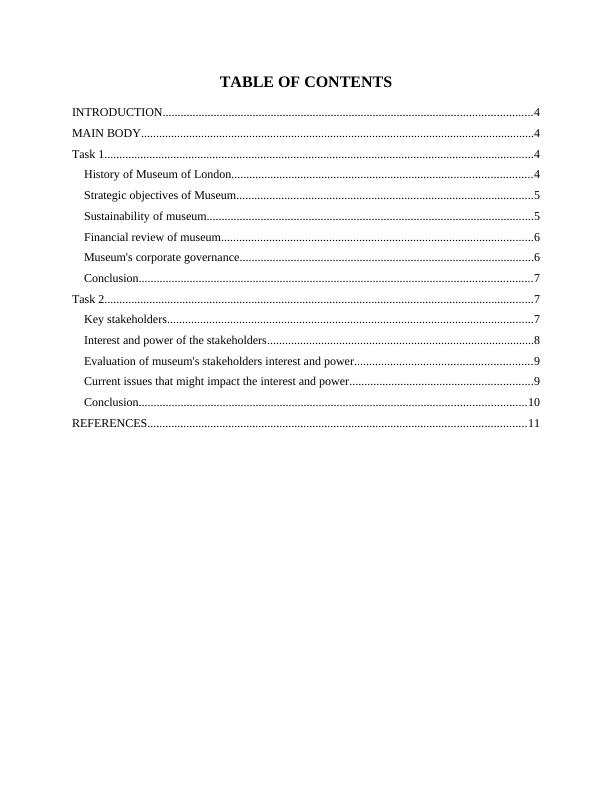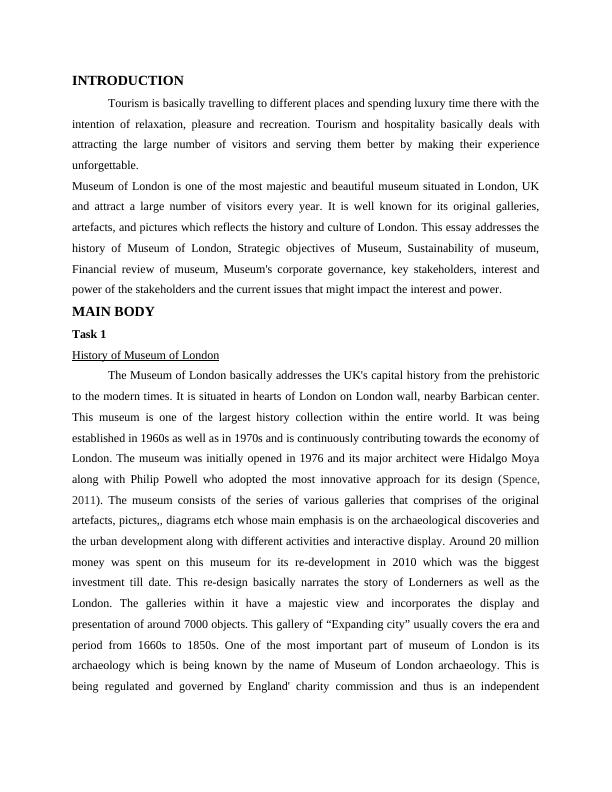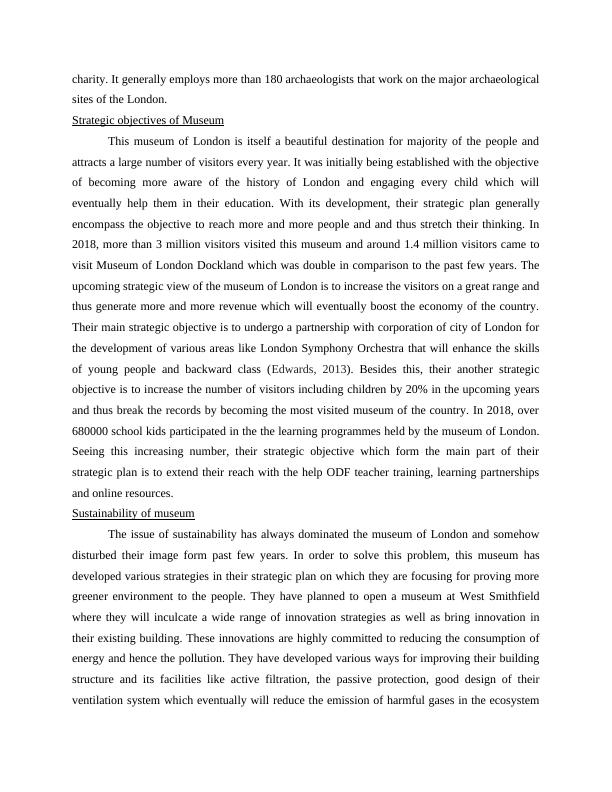History and Strategic Objectives of Museum of London
This assignment is a coursework briefing document for a module in Hospitality, Tourism, and Events Environment. It must be completed individually and should not exceed 2500 words (excluding bibliography and other items listed in the academic regulations). The assignment must be submitted anonymously and should follow the Harvard referencing system. The submission deadline is Friday, 08 November 2019.
Added on 2023-01-19
About This Document
History and Strategic Objectives of Museum of London
This assignment is a coursework briefing document for a module in Hospitality, Tourism, and Events Environment. It must be completed individually and should not exceed 2500 words (excluding bibliography and other items listed in the academic regulations). The assignment must be submitted anonymously and should follow the Harvard referencing system. The submission deadline is Friday, 08 November 2019.
Added on 2023-01-19
End of preview
Want to access all the pages? Upload your documents or become a member.




